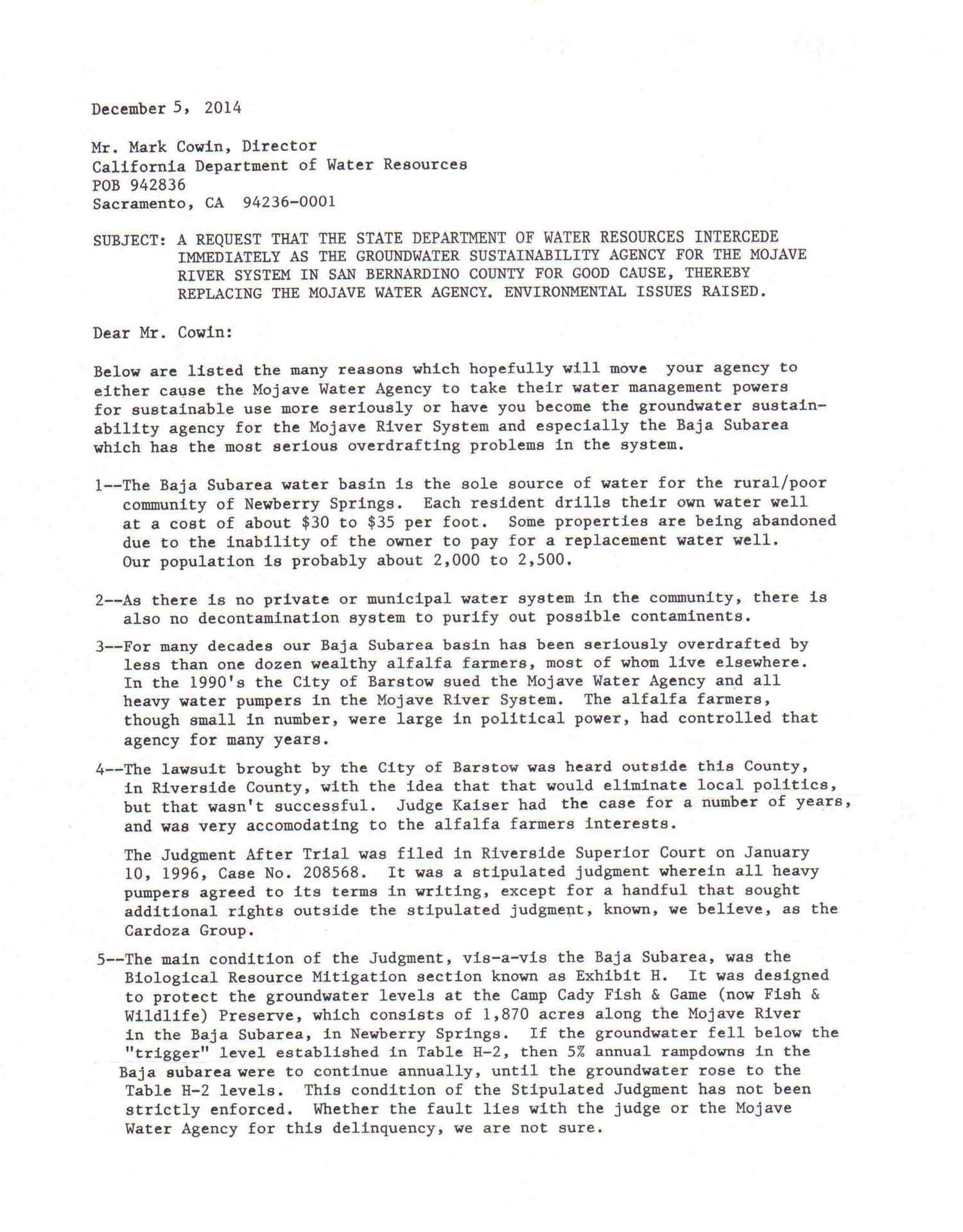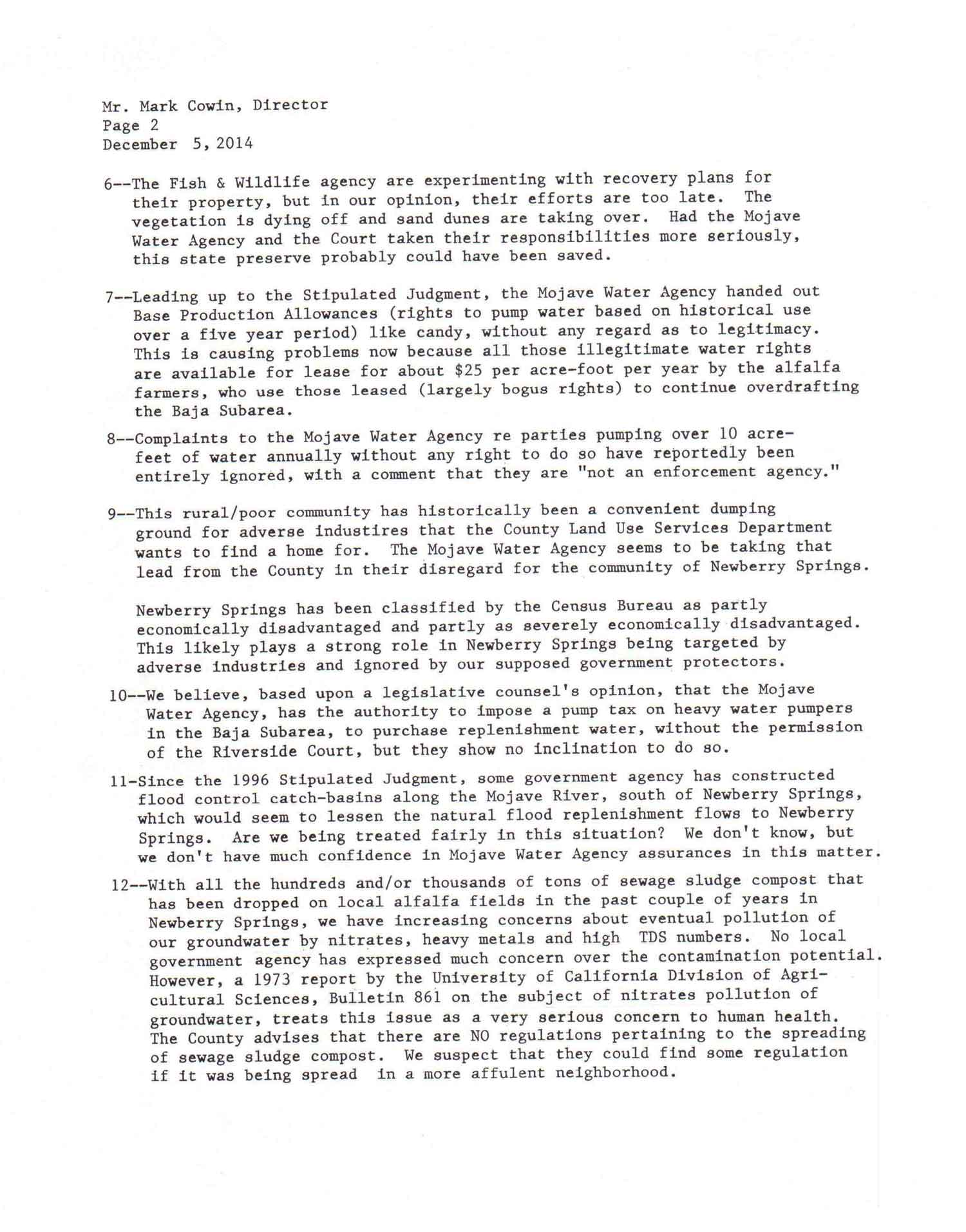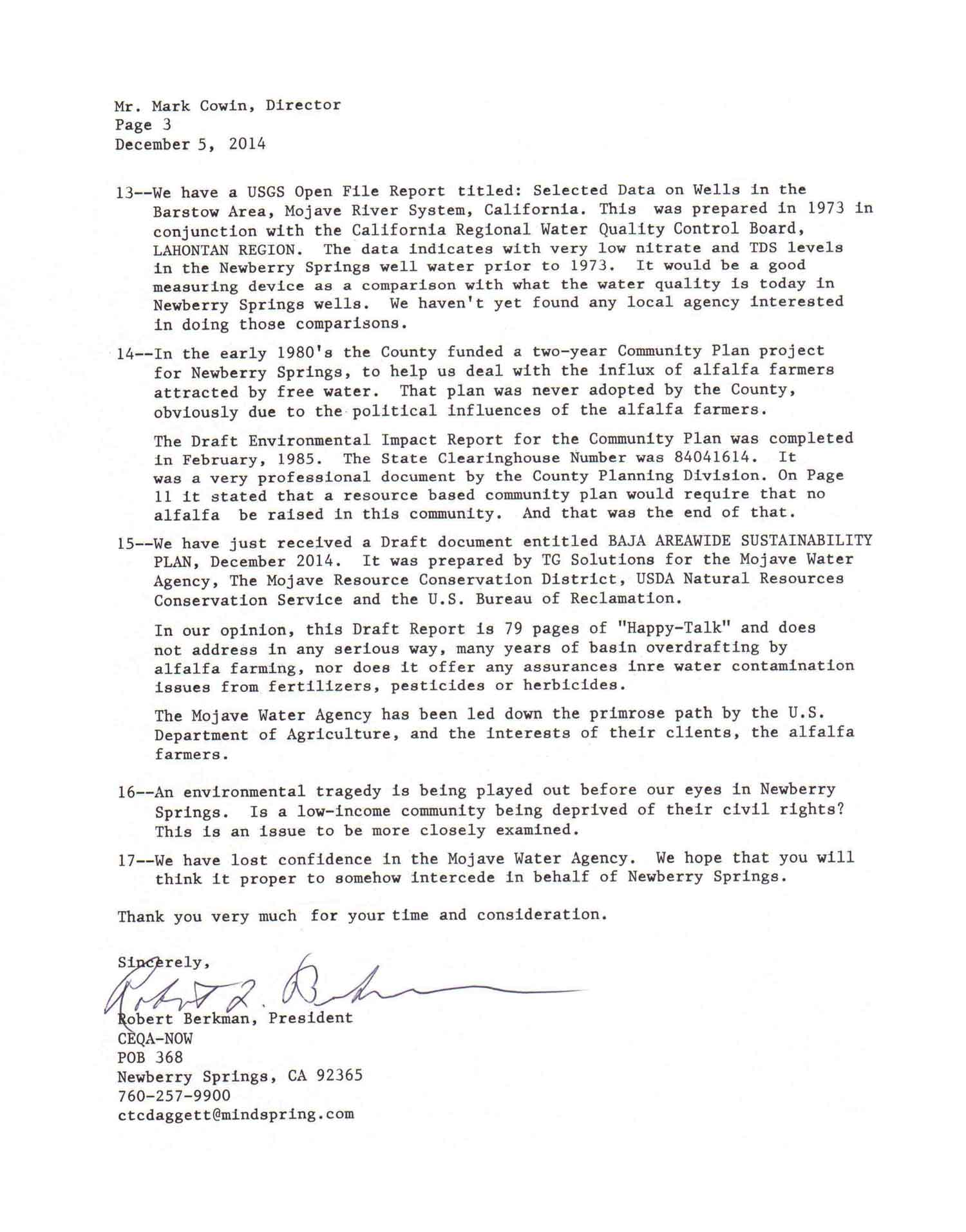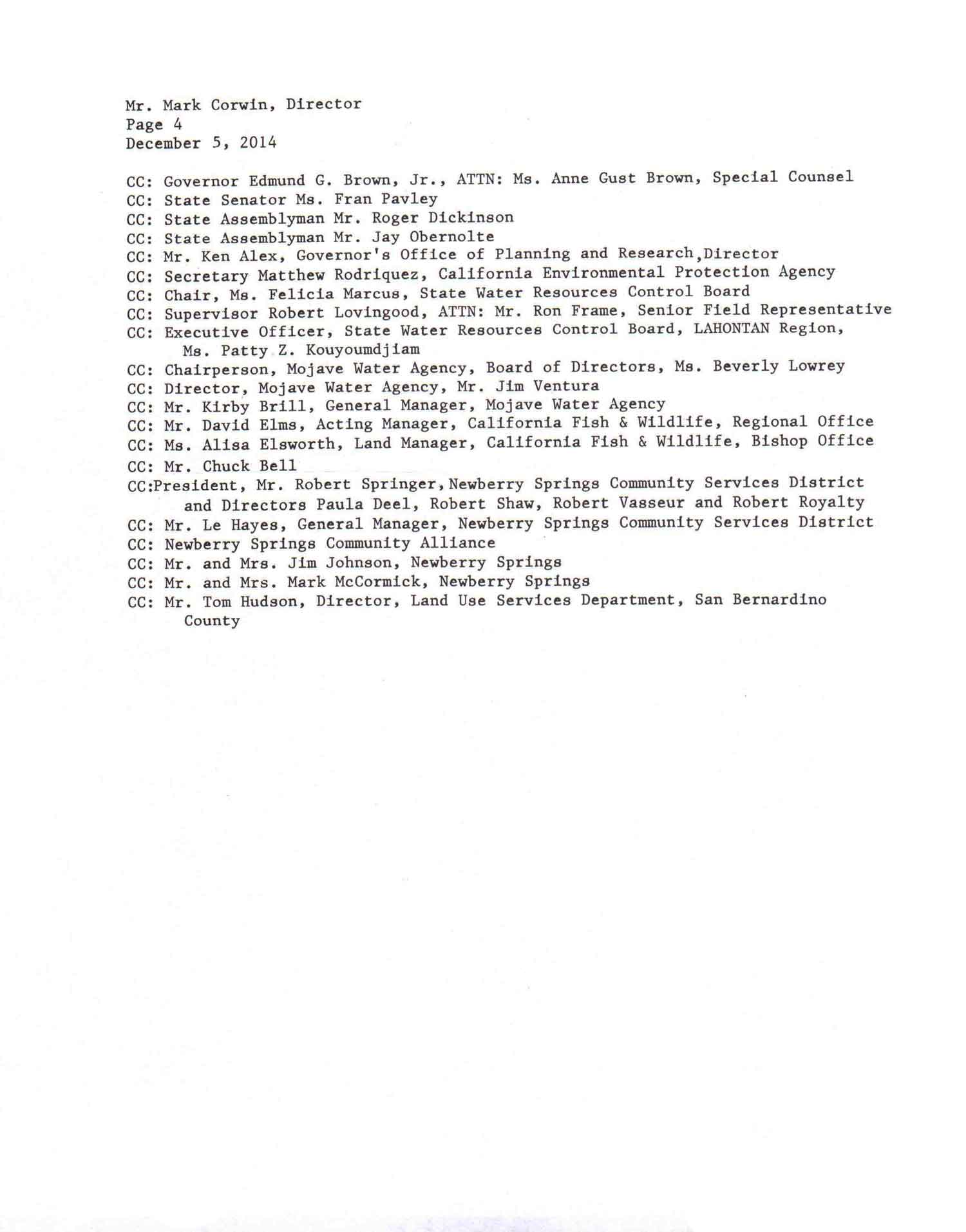Baja Water Sustainability Plan
Supports Continued Unsustainable
Pumping By Farmers
|

|
Under Christmas decorations, Newberry Springs farmers, lake owners,
and minimum pumping residents attend the 6th public meeting of the Baja Areawide Sustainability
Plan to address the serious groundwater overdrafting in the Mojave Valley.
|
|
Mojave Water Agency targeted for its failures.
|
December 9, 2014
Last week a stunning draft report of the Baja Areawide Sustainability Plan
was released as a prelude to this week's Newberry Springs community meeting that was jointly
organized by the Mojave Desert RCD, USDA Natural Resources Conservation Service, the Mojave Water
Agency, and the US Bureau of Reclamation at the Newberry Springs Service Center Monday night.
The draft, which is claimed to be the accumulation of earlier public
input, appears to be extremely bias in appeasing the heavy water pumpers of the
Mojave Valley, by failing to seriously limit the severe overdrafting of the local aquifers.
According to an internal Mojave Water Agency (MWA) document, the results
of the proposed draft "will be used to finalize and implement elements of an area-wide plan."
And, "will consist of finalizing the Baja Plan and initiate various projects that
came out of the community-based planning efforts."
The document goes on to state that the Baja Areawide Sustainability Plan
will "initiate various programs supported by the community." The reality is that the
plan has failed to acquire the support of the community. When read, the plan reads as another
government/consultant driven plan, that in large part fails to confront the hard steps necessary to
mitigate the devasting water overdraft problem that the water sustainability plan is suspose to
address.
According to reports that the Blotter has received, those drafting the
plan, in addition to the public meetings, have privately met with some of the farmers and lake
owners. Perhaps this is the public consensus that is talked about. Missing, however,
has been private meetings with the minimum producers, the vast majority of the stakeholders.
The MWA's document is reflective of the writings contained
in the draft. The WMA states that "Local community members including farmers,
businessmen and homeowners have been working in partnership with federal, state and local
agencies to develop the Plan." This gobbledygook is a fallacy. With the
exception of the half-dozen short, poorly advertised meetings in which some homeowners
have attended, the public as a whole (the minimum producers) have not participated nor
been reasonably reflected in the draft.
As the Mojave Water Agency's own document referenced above states that
the plan "will be used to finalize and implement elements of an area-wide plan,"
this plan should be accomplied by an Environmental Impact Study (EIS). To circumvent the
time and costs in doing a EIS/Draft Environmental Impact Report, the drafted plan contains
another layer of gobbledygook that states:
The Baja Plan is a high-level planning exercise which has a primary purpose of documenting
the collaborative effort with stakeholders to identify options and theoretical results of
actions that could be implemeted in the Plan area. The Baja Plan does not directly
result in projects or actions. As such, the Project Team determined that documentation
and analysis pursuant to the National Environmental Policy Act (NEPA) and California
Environmental Quality Act (CEQA) are not necessary.
This is garbage. The Baja Areawide Sustainability Plan has a
specific purpose to implement the action of a water sustainability plan. As a necessity,
the development plan should have a CEQA study to consider all elements and alternatives, and
their impacts, to produce a plan that will meet state law.
Currently, without a partnership with the community's majority,
the drafting team wants the public to believe (to circumvent CEQA law) that the
multi-governmental agencies and consultants are being paid to assemble mountains of
documents and data
(link downloads 1000 PDF pages) for a non-product. By disguising the description of their work
to being a "planning exercise" of "options and theoretical results of actions that
could be implemented in the Plan area;" the coalition team's misrepresentation
may lead to a legal challenge of its unscrutinized data.
The development team does have some wiggle margin as the final
outcome will be judicial. The final plan when completed is expected to be submitted
to the Mojave Water Agency for approval in February 2015, and then submitted by the Watermaster
to Judge Trask of the County of Riverside Superior Court by May 1, 2015. This will
be part of the annual recommendation to that court for rampdown analysis and review.
The coalition of agencies participating in the development of the Plan are
preparing actions that will have a significant environment impact upon the future Baja Sub-area
Water Basin should the MWA and the court accept their plan. The plan would be far stronger
if its elements and impact were properly understood through the scrutiny of an Environmental
Impact Study.
Much of the talk given at the Monday night community meeting was about
all sides of the water issue coming together and formulating a united front before the court.
This concept, as reflected in the extremely weak Baja Plan, is starry-eyed, fairy dust.
The feel-good developers of the plan are not facing reality! The Mojave Valley receives
4-inches of annual rainfall. The farmers want to continue to pump multiple times that
amount. The minimum pumpers not only want the state's mandated groundwater sustainability,
they also want recovery of the aquifers. The abyss is far too great for any compromise.
In trying not to take sides, the plan's developers have released a plan
that is so weak, that it is worthless in serious overdraft control. But of course the
developers would like everyone to accept it so that they could do a victory dance.
The releasing of the draft without a plan of action to
address the ills for which the coalition was formed was the final breach that has caused
CEQA-NOW to send the following letter.



